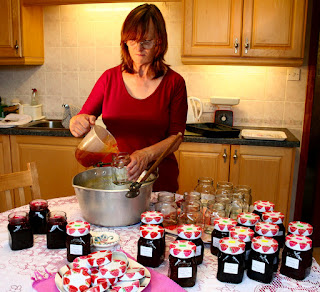REJUVENATE THE HERBACEOUS BORDER
Herbaceous and border plants are no longer confined to the formal straight rectangular border, but can be planned to fit in with other shrubs or garden plants. However it is useful to group together plants with similar flowering times for impact and maintenance. Modern herbaceous plants can happily be mixed in with other border plants, annual bedding and annual flowers from seed. Underplanting with bulbs such as snowdrops, crocus, anemone blanda, narcissi, tulips and lilies can extend the flowering season and keep an interest going for most of the year.
Herbaceous plants start flowering in early spring with the Hellebores, Doronicums, Pulmonarias and bulbs planted in between large meandering drifts. There is plenty of time for bulbs to flower and grow before the herbaceous plants need the space, and at the end of the season those that lose their foliage early can be underplanted with cyclamen which flower at the end of summer and come into leaf in autumn.
Flowering continues right through till autumn with the Anemone Honorine Jobert, Phlox, Aster (Michaelmas daisies) and red hot pokers. Whilst we are still enjoying these later flowers many of the earlier flowering types are now looking a wee bit bedraggled and in need of some attention.
Flag Iris is well past its flowering time and even growth has slowed down allowing disease to affect older leaves, so they really need a good clean up. Remove all old dead leaves, flowering stems and give the plant a trim. This is a good time to replant, replace and plant up new varieties. Older clumps can be lifted up and divided to keep them fresh. Use young growths with two or more prominent buds, and some decent roots. Dig over the border, adding garden compost and replant about a foot apart with the rhizomes are still visible above the soil. Make sure the transplants are well watered just in case we get a dry autumn, (it is possible!!!) Try a few new varieties from a specialist UK grower sourced from the internet.
Delphiniums, Oriental Poppies, Campanulas, Shasta daisies and other spring and summer flowering plants now need dead heading and cutting back the old foliage. Also remove any canes or stakes and ties no longer needed. Delphiniums start to plump up buds for next years flowering stems and in this wet season slugs and snails are having a fantastic time, so keep sprinkling the slug pellets or next years show could be quite diminished. Sometimes the Oriental poppies will flower for a second time after cutting back if luck is on your side.
Peonies tend to retain their foliage till late autumn so I leave them intact to build up good crowns for flowering the following year.
Some of these clump forming plants can now be dug up, divided and replanted into a freshly prepared border. It is best to fork out small plants from the outside of large established clumps as these will be the youngest plants. As the borders are permanent for several years, this is the time to add a generous helping of well rotted garden compost. I have a huge compost heap, but it is still rotting down so I will be using the Council’s Discovery compost, which is readily available, cheap, weed free and well rotted down, so very easy to add to the soil. It is also excellent for those areas of established border with a lot of spring bulbs so you can’t really cultivate to any depth. I spread Discovery compost on these areas about two inches thick and lightly fork it in taking care to replant any tulips, crocus or other bulbs I accidentally dig up. Always apply a compost mulch in autumn before any early bulb foliage such as grape hyacinths, appears otherwise you may bury new emerging young leaves.
Herbaceous plants such as some low growing Bellflowers, Campanula are excellent for ground cover to create permanent planting areas of low maintenance, lasting for three or more years, but then every so often you do need to dig up and replant, getting rid of old spent clumps. With careful selection you can establish a border with plants that need no staking. Many herbaceous plants can be quite tall so support is essential, but Iris, Hemmerocallis, some Phlox, Heucheras (see below) Bergenias, Kniphophia (red hot pokers) Anemone Honorine Jobert, Hostas and Doronicums and many others can be left unsupported.
Plant of the week
Heuchera is an herbaceous perennial plant grown for its brightly coloured foliage in green, pink, bronze, scarlet and variegated with long racemes of white, pink and red flowers in spring. It is very popular on account of its evergreen foliage and ability to thrive in most situations, and is the perfect plant to brighten up a dull corner. The common name is alumroot and they come from North America so are very hardy in UK. It tolerates winds, sea spray, dry and many different soils, but will thrive better in rich well manured soils as it can be a gross feeder. It is happy in full sun or moist shade and rarely affected by pests or diseases. Even the slugs and snails leave it alone.
END



















